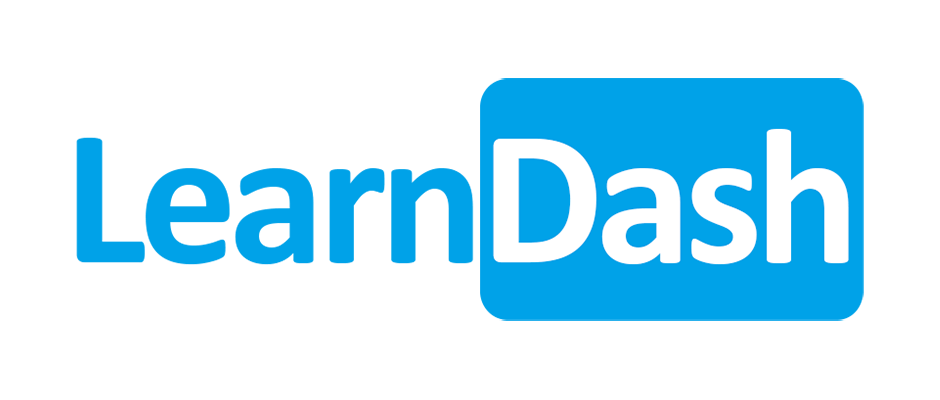The online course market is incredibly lucrative with a projected growth of $240 billion by 2023. WordPress can help your business tap into that potential to level up your profits.
WordPress is a robust, free and open source website publishing platform that you can install on your own server. It’s entirely customizable and powerful, which makes it the perfect platform for publishing online courses.
There are online courses available in just about every industry, which also means that no matter what market your business is in, it could benefit from sharing your expertise with online courses.
There are numerous WordPress plugins and options available for you to quickly (and in some cases, effortlessly!) set up your WordPress website with online courses.
Today, I’ll share more details about why online courses can be highly lucrative for your business. I’ll also share how you can formulate a winning idea as well as how to plan your courses and the options available to set them up.
What’s the Big Idea?
As I mentioned above, online courses have become a profitable and worthwhile source of income for many businesses.
So much so that social media giant LinkedIn acquired Lynda.com, an online learning website with courses, for $1.5 billion in 2015.
It’s also become an incredibly popular and preferred option for learning. According to an abstract done by Ambient Insight, online courses and specifically “cost-effective Game-based Learning, Simulation-based Learning, Mobile Learning, and Cognitive Learning products… are far more effective knowledge transfer methods than eLearning.”
Ambient Insight defines self-paced eLearning in their report as software such as CDs that are privately marketed.
This means that people are turning to online course websites such as Lynda.com to learn and grow their careers, rather than to separate learning software such as Rosetta Stone.
Not only are online course sites a more popular option, but people are flocking to them in droves as Docebo reported that 73% of adults consider themselves to be life-long learners and 63% of working adults are professional learners who have taken an online course within the last year to level up their job skills or career.
Why People Love Online Courses
But why are so many people turning to online courses?
There are several reasons ranging from cost to a friendlier user experience including:
- People don’t want to spend countless hours scouring the internet for the same information.
- They’re often self-paced or otherwise have a flexible schedule available.
- That flexibility comes in handy for people with busy lives or families.
- You don’t need any special equipment other than what many people already have access to: an internet connection and a computer.
- Skills can be learned and practiced in a fun setting.
- Signing up is easy and there’s a low barrier to entry. Often users are only required to enter only a couple details such as their name and email to get started.
- A social aspect is common so students can still join study groups and get quick answers to their questions at any time from instructors or their peers.
- They can be accessed from anywhere, including mobile devices and on the go.
- Online courses are usually a lot more affordable than college tuition.
- People can take online courses how and where they’re ultimately comfortable such as their couch while eating some chips (or a martini if they really wanted) since they don’t have to sit in a rigid classroom where an instructor or institution is telling them they can’t.
- They look great on a resumé even if a college isn’t offering the course (in many cases). It shows the person is eager to learn and grow their skills, which is a valuable trait to employers.
- In some cases, employers reimburse their staff when they take online courses.
- The technology is out there to create courses that match everyone’s learning styles.
- Speaking of technology, there’s a wider range of tools and possibilities available so that courses can be incredibly effective and do amazing things.
I also saved the best reason for last: A study by MIT found that online courses have proven to be more effective than traditional lectures. In fact, students that were the least prepared made significant gains taking online courses and were just as successful as heavily prepared students in a traditional setting.
What’s possibly more astonishing is they were able to find consistent results.
Perhaps not surprisingly, online courses had such higher favorable results due to the community aspect of online courses as students were highly engaged and much more frequently since they could participate in ongoing online study groups with their peers.
-

Online courses aren’t just effective, they’re more effective than a traditional lecture setting.
What’s Your Big Idea?
Creating online courses is an excellent strategy to scale up your business given the details above, but it can often be a challenging idea for many business owners.
It’s common to assume your business can’t cash in on such a market, but that couldn’t be farther from the truth. Businesses everywhere from electricians and plumbers to technology and engineering companies can benefit.
There are online courses available in every industry so there’s no reason to think that there’s no way your business could get in on a slice of that pie.
But there’s also no reason to believe that the market is oversaturated. Everyone’s different which means that there are many people who would prefer to learn from you over many of the other businesses and instructors out there.
The online course market is still growing, which means there’s plenty of room for your business to succeed alongside many others.
You may not think you or your staff are “expert” enough to teach in online courses and this idea is commonplace. But the thing is, if you have already grown a successful business, that means you and your team are capable and can be considered as experts.
The caveat is that you’re not going to be seen that way unless you take action and do something to capitalize on the talents and skills that are readily available in you and your staff.
Once you’re ready to take the plunge and create online courses to level up your business, you can start planning and coming up with a winning idea.
Researching Your Next Big Thing
One of the most important parts of picking a successful idea for an online course is picking a good niche. If your idea is too broad, it will be more difficult to distinguish your course from the many others out there.
Fortunately, if your business is already successful, then this step is done and dusted. Still, it’s a good idea to do some research and see what kind of online courses are already out there in your niche.
Don’t worry if there are several courses already out there that are successful. While this may seem counter-intuitive, it ensures there’s enough interest to grow your courses and your business.
Plus, not everyone is going to resonate with those courses or instructors. That’s where you can swoop in and do things a lot better and blow them out of the water.
On the other hand, you don’t want to start in a niche that’s oversaturated with online courses where there’s nothing you can do differently or better to win over potential students. If you do think of a game changer, then by all means go for it.
To find out if there’s an interest for courses in your niche and if there are ways you can bowl over the competition, a little research can go a long way.
Not That Kind of Trolling
Start by checking forums and discussions in comment sections of blogs that are in your industry. Pay attention to what customers are asking and if their problem wasn’t solved within the conversation.
Make a list of these questions and when you have quite a lot to work with, research them further to see if there are quite a lot of people asking the same questions.
The key here is to find questions that are relevant to the target audience of your business. If your customers are mainly young adults, you’re not going to want to entertain questions by high-profile professionals unless it’s an audience you want to start acquiring.
Check out What is a Target Audience in Marketing? and How to Define Your Target Market for details.
-

Spend some time trolling through industry forums in search of common customer questions.
Well a Bird is a Keyword
When you see a trend going on, you can see exactly how much interest there is in finding a particular solution with keyword research.
For details, check out How to Do Keyword Research for SEO: A Beginner’s Guide, How to do Keyword Research the Smart Way: Targeting Interest and Intent and How to Do Keyword Research in 2017 — Ahrefs’ Guide.
Search relevant keywords that are in your niche and that you think people may be searching to find answers.
If you can find a volume of around 250,000 give or take, then that’s a great place to start for your online course. That means there’s enough interest to start out and grow over time.
Write down a list of keywords that have this kind of potential. Then, you can refine the list by researching them further.
Continue by searching what else is out there for each keyword you earmarked. If there are already outstanding courses that you find in your keyword research, then it may be difficult to compete, though, not impossible as long as you can come up with a way to do it better, but I’ll get to that later on.
Make a note next to each keyword with details on the competition. That way, you can continue refining your ideas and decide if you’re able to outdo your competitors or if you’re better off starting out in an area of the internet that’s easier to get your foot in the door.
Coming Up with a Winning Course Idea
Once your preliminary research is done, you can decide on a course idea that works for your business and can really draw in a crowd.
While you’re considering course topics, keep in mind that a successful course idea will have these qualities:
- Solves a big problem for a potential student, otherwise known as a pain point
- Shouldn’t be a quick answer and should be in-depth and thorough
- Needs to provide high value
While you don’t need to give away the farm or be as thorough as a college course, you do need to go into enough depth to completely solve the pain point you’re tackling in your course.
For example, if your business is an auto shop, then your course shouldn’t just teach someone how to change a tire, unless it’s a small part of a larger topic.
A potential student shouldn’t be able to find the same answer that you’re providing in your course by searching Google for a few minutes.
At the same time, you don’t have to teach an entire course on car mechanics where the student ends up learning everything there is to know about cars by the end of the course.
Instead, find a happy medium. If you’re struggling with finding a suitable topic for your course, you can continue doing more research.
When it comes to creating a high-value online course, you can do this in many ways outside of the content you’re going to provide.
You can decide on what you can add to your course to increase its value during the planning stages.
-

With a little research, coming up with a winning online course idea isn’t so difficult.
Planning Your Online Course
With all that research in mind, you can start planning your online course. At the same time, you can begin brainstorming ways to make your course better than anything else that’s out there in your industry.
Part of the process is deciding where to host your courses and a self-hosted WordPress site is an excellent option since it’s robust and provides the most flexibility. You also retain 100% control over your content and the rights to it.
If you choose a managed platform, this may not be the case and you definitely want to own your content!
For details, check out 27 Reasons Why WordPress Crushes Squarespace Every Time and 15 Reasons Why WordPress is the Best Platform for Your Website.
Now that that’s out of the way, you can focus on planning the architecture of your online course.
Different Ways to Serve Up Online Courses
Before we get into the nitty-gritty of what kinds of content you can include in your course, it’s important to understand the different ways you can present your online course with the technology that’s available today.
Most commonly, you can serve up your courses in the main ways detailed below.
Standard / Free
Once a user signs up, they have access to everything right away.
You can set up a free account for users where they can upgrade after getting a sample of the content or you can decide to sell to them and ask them to pay for the course and create an account at the same time.
Drip Feed
Drip feed courses are different than standard ones in that content becomes available one step at a time and only if a user completes an earlier and previous portion of the course.
This prevents students from jumping around and learning concepts that may not make sense out of context. However, it does prevent already learned students from skipping ahead if they already know something.
Date Range
This is a type of course where it’s only available for a limited time and during a certain window of time before it becomes unavailable to new registrations.
You can sell your course for a few days or a few weeks, then tell potential students they can only sign up for a limited time before registration closes.
This creates a sense of urgency so people won’t likely wait to sign up if they’re at all interested, but prevents you from making recurring income year-round. Although, you could run the course yearly, at every quarter or any other frequency you want.
This option is particularly helpful if you want to be available for student questions, but have time restrictions.
Membership Website
You can also opt for creating a membership site where users can sign up for free or for premium memberships to access certain content. You can also let them upgrade if they want access to more content or courses.
This is an incredibly flexible option that can also help you monetize other content outside of your course. It can also provide you with an opportunity to upsell to users. At the very least, you could increase the rate at which you receive email sign ups to sell to them later.
For details, check out How to Scale Up Your Business by Selling Premium Memberships and How to Earn Extra, Passive Income with a Premium Membership Site.
-

There are numerous ways you can structure and create winning online courses.
Making Students Content with Your Course Content
Once you have decided on the structure you want for your online course, you can start planning what you’re going to include in it.
Here are some ideas and areas to consider when creating content for your course (or beating your competition):
- Videos hosted on a separate platform like YouTube, Vimeo or Wistia since self-hosting them can quickly use up your server’s resources, which gets expensive.
- Transcripts of your videos
- Quizzes, tests or final assignments
- Gamification to enhance engagement and learning as well as other interactive elements
- Downloadable files that enhance the learning experience such as reference sheets with the most import facts and other helpful material
- Community chat or forum to discuss the course with the instructor and other students
- A way to track and show a student’s progress
- A downloadable certificate for successful completion of the course
- Accessibility on mobile devices or on the go
- Bonus material to entice students to sign up such as some of the materials above or an additional mini-course
This list only scratches the surface. There are many more options out there as well. For details, check out How To Turn One Idea Into Multiple Products.
Creating Your Online Courses
There are numerous WordPress plugins available for you to create professional online courses for your business.
Below are some excellent options for you to consider if you would like to take care of the technical aspects of your course yourself. They’re all maintained frequently and are the best options available at the time this article was written.
WP Courseware

WP Courseware is a premium Learning Management System (LMS) trusted by several high-profile companies including CNN, VErizon Wireless, The University of Wisconsin, Miami University, University of Kentucky and many more.
It has a drag and drop course builder and you can sell courses, restrict content, make quizzes and give PDF course certificates automatically. It also comes with several third party integrations such as WooCommerce, BuddyPress, Slack and so many more.
CoursePress

CoursePress is a free LMS plugin that lets you create eye-catching and functional online courses with videos, quizzes, automated assessments, completion certificates and more. There’s also a premium version available with a lot more features.
Sensei

Sensei is a premium WooCommerce plugin extension that lets you sell courses or offer them for free. With it, you can create different types of quizzes, offer downloadable certificates, display student progress, add media attachments and have several more useful features.
LearnPress

This is another free option for creating and selling online courses. It includes a drag and drop course builder, has a built-in communication feature for instructors to connect with their students, and you can create lessons and quizzes with text, images, videos and more. There’s also a premium option available, but you can create an unlimited number of courses, quizzes and lessons in the free version.
LearnDash

LearnDash is a premium LMS for WordPress that is a top choice for major universities and fortune 500 companies, according to their website. You can create and sell online courses, create lessons, topics, quizzes and categories, deliver certificates, points and badges to incentivize students as well as display student progress.
It also includes engagement triggers that interact with students based on certain actions. You can also choose to enter in a minimum amount of time that users must spend on each lesson before being able to move forward in the course.
There are also over 300 different payment gateways available to sell any course you create with this plugin.
Wrapping Up
The online course space has exploded in popularity, profits and potential for many businesses and in virtually every industry. You can scale up your business and benefit by creating your own online courses.
Now you know how to get started with planning, setting it up and brainstorming a winning idea.
Do you plan on creating online courses to level up your business? Have you already decided what kinds of courses you want to offer? Have you come across any roadblocks you’re stuck on? Share your thoughts and experience in the comments below.
Read other posts about:
Discover your innate talents and embrace them as the foundation to personal and business success. Walk away with personalized tips to help you overcome the mental hurdles unique to your brand builder personality.
What’s your brand builder personality?
Take the quiz
Leave one here
Comments